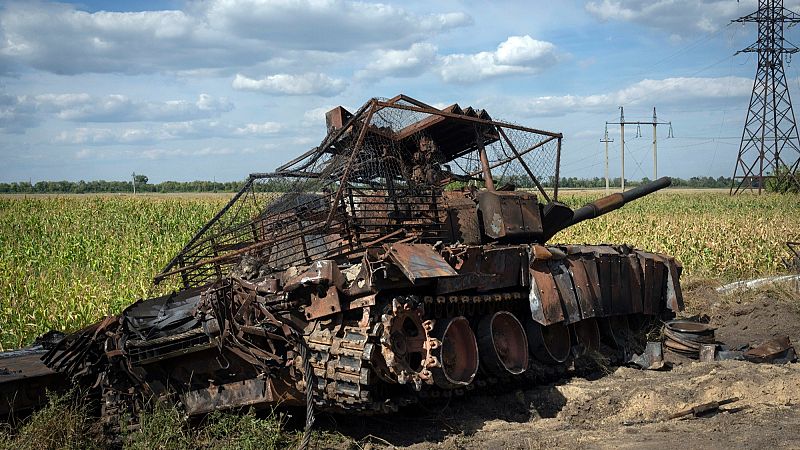Ukraine launches fresh assault in Russia's Kursk region

Ukraine has launched a new assault in Russia's Kursk region, six months since Kyiv's surprise incursion into the border area last August.
According to the Institute for the Study of War, a US-based think tank, Kyiv forces have advanced up to 5 kilometres behind Russian lines southeast of Sudzha in Kursk.
The geolocated footage has shown Ukrainian forces moving along the Sudzha-Oboyan highway and already capturing several villages along the way in the direction of Cherkasskaya Konopelka and Ulanok.
Ukrainian authorities are not commenting on the latest developments, while Moscow says the attacks with up to two mechanised battalions' worth of armoured vehicles have been repelled.
Russian military bloggers have shared more details on what has been happening in Kursk, with some of them reporting that Ukrainian forces went on an assault with 30 to 50 armoured vehicles and seized Cherkasskaya Konopelka and Ulanok. However, others denied this claim.
The ISW insists that it has not yet found evidence that would allow it to assess that Ukrainian forces are operating in Ulanok.
Six months of Ukraine's incursion
Kyiv launched its incursion into Russia's Kursk region on 6 August 2024, taking Russian military commands and Ukraine's Western allies by surprise.
Six months later, Kyiv officials shared some details about the August operation, revealing that small Special Operations Forces (SSO) units infiltrated Russia's rear in the Kursk region as early as June 2024 — two months before the main incursion began.
They have advanced behind Russian lines in Kursk to prepare for the Ukrainian incursion, conducting reconnaissance and targeted strikes to dismantle key elements of Russia's border defences.
The SSO noted that Ukrainian forces systematically destroyed Russian air defence and ammunition depots, limiting Russia's ability to respond.
Six months later, Ukrainian forces have maintained positions in the border area, but Russia has taken back control of up to half of the area initially captured by Kyiv's military.
Ukrainian authorities insist that the main goals of the operation have always been different. Kyiv says the incursion prevented a new Russian offensive against the cities of Sumy and Kharkiv and helped to build leverage over Russia for any possible talks to put an end to the war.
Ukrainian President Volodymyr Zelenskyy also noted that the Kursk incursion reinforced his "peace through strength" principle and gave Ukraine a significant replenishment of POW "exchange funds".
In its six-month assessment of Ukraine's August incursion and the continued operations in the area, the ISW said that a small group of Ukrainian troops in Kursk have complicated the Russian military's efforts to advance in Ukraine.
"The incursion has highlighted how Ukraine can exploit vulnerabilities in Russia's manpower reserves and theater-wide campaign design to exert limited control over Russian battlefield activity in Ukraine and generate strategically significant informational and political pressures on Russia," the ISW said.
Russian President Vladimir Putin this week praised some of Moscow's elite formations defending the Kursk region, highlighting the fact that the Ukrainian incursion has pinned down about a combined arms army’s worth of Russian troops in there since August 2024.
The ISW recently noted that the Russian military command had gathered around 78,000 troops, including 11,000 North Koreans and elements of most of Russia's elite VDV and naval infantry formations in Kursk, aiming to push Ukrainian forces out of Russia's territory.
Despite these numbers and the involvement of Pyongyang troops, Moscow still hasn't prioritised its defence of Kursk over continuing advances in Eastern Ukraine and its ultimate goal of fully capturing the whole of Donetsk and Luhansk regions.
Today

